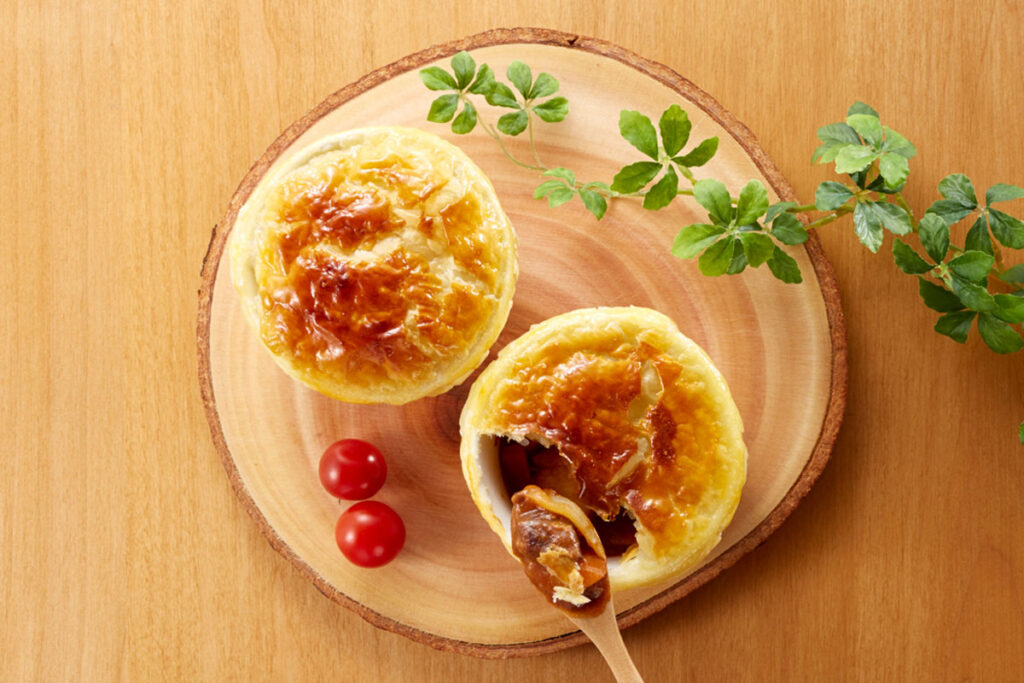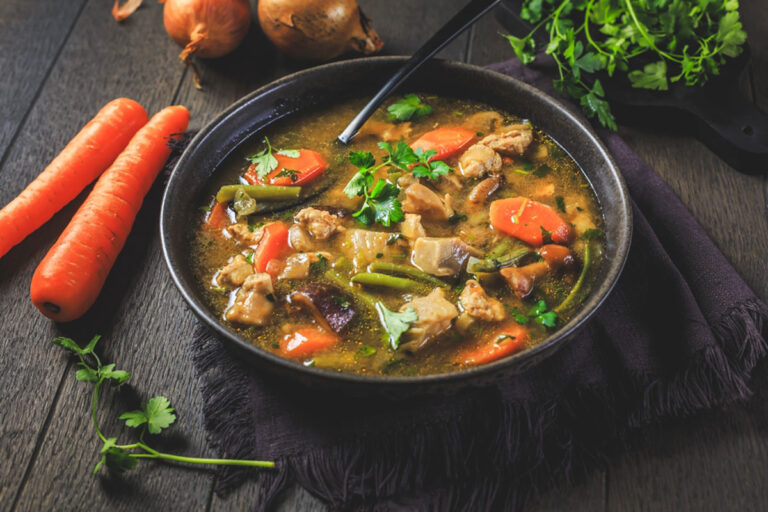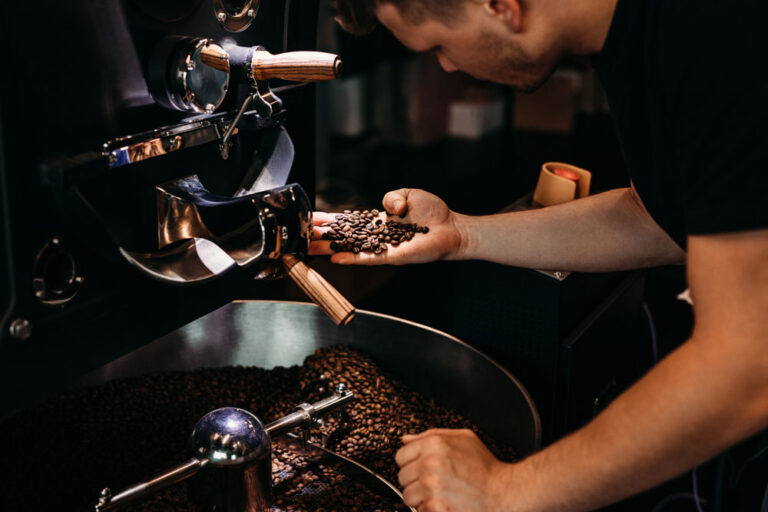The Evolution of Street Food in Ireland
Street food has been a growing trend worldwide, and Ireland is no exception. Traditionally known for hearty home-cooked meals like stews, pies, and breads, Irish cuisine has long celebrated the use of fresh, local ingredients. However, in recent years, a new movement has been gaining momentum—the rise of Irish street food, blending tradition with modern flair.
A Slow Start
Unlike other countries with deep-rooted street food cultures, Ireland was slow to embrace the trend. For decades, food on the go in Ireland was limited to fish and chips or simple fare like sandwiches. The street food concept was largely associated with fast food or low-quality options. However, with the rise of food trucks and markets in the early 2000s, perceptions began to shift.
A Focus on Local Ingredients
One of the driving forces behind Irish street food’s growth is the emphasis on locally sourced, high-quality ingredients. Ireland’s agricultural heritage has always provided an abundance of fresh produce, seafood, and meats, making it the perfect backdrop for a food revolution. Many street vendors are now working directly with local farmers, butchers, and bakers to create dishes that showcase the best of what Ireland has to offer.
Fusion of Tradition and Innovation
Irish street food isn’t just about putting familiar dishes on a paper plate. The key to its success has been the creative fusion of traditional Irish recipes with international flavors and techniques. You’ll find food trucks serving everything from classic Irish stew in portable forms to tacos stuffed with slow-cooked Irish beef or lamb. There’s a strong focus on artisanal products, handmade sauces, and inventive takes on beloved Irish ingredients like black pudding, smoked salmon, and potato farls.
This fusion has given rise to an entirely new way for people to enjoy Irish cuisine. Visitors to Ireland can now experience traditional flavors with a twist, whether they’re wandering through city streets or stopping by a local farmers’ market.
Top Street Food Markets and Festivals in Ireland
As street food has become an integral part of Ireland’s evolving food culture, food markets and festivals have emerged as the perfect platforms for showcasing this exciting trend. These bustling events are not just about grabbing a bite to eat—they’re social hubs where locals and tourists alike gather to experience the creativity and diversity of Irish street food.
Here are some of the top markets and festivals fueling the Irish street food revolution:
1. Dublin Flea Market and Food Flea
Located in the heart of Dublin, the Dublin Flea Market is known for its eclectic mix of vintage goods and handmade crafts. The addition of the Food Flea brings together some of the best street food vendors in the city. You can find everything from artisanal pizzas to gourmet grilled cheese sandwiches, all using fresh Irish ingredients. Vendors frequently change, so visitors are always treated to something new and exciting.
2. Galway Street Food Scene
Galway’s vibrant street food culture has earned it a reputation as one of Ireland’s foodie capitals. The Galway Market, which runs every weekend, features a wide variety of food stalls offering street food from around the world, as well as local Irish favorites. Whether you’re in the mood for freshly shucked oysters from the nearby coast, wood-fired pizza, or vegan-friendly options, Galway’s street food scene has it all.
Galway is also home to the Galway Food Festival, an annual event that showcases street food vendors alongside gourmet chefs, all with a focus on local and sustainable ingredients. It’s an unmissable event for street food lovers.
3. Cork’s English Market and Food Trucks
Cork’s English Market has long been a symbol of Irish food heritage, but the city’s growing street food scene is quickly catching up. Outside the market, food trucks have become a popular sight, offering everything from Irish-style tacos to seafood chowder. Events like the Cork Food Festival highlight the city’s commitment to culinary innovation, and street food plays a big role in that.
In addition to its markets, Cork boasts a strong food truck presence, with vendors set up in parks, at music festivals, and by the coast. Street food here often focuses on fresh seafood, artisan breads, and creative spins on Irish classics.
4. The Big Grill Festival (Dublin)
For those who love barbecue and grilled meats, The Big Grill Festival in Dublin is a must-visit. It’s Ireland’s largest international barbecue festival, but street food vendors play a significant role in the event. With everything from slow-cooked pork sandwiches to whiskey-glazed ribs, this festival celebrates both traditional Irish meats and international barbecue styles, all cooked in street food-friendly portions.
5. Belfast’s Street Food Movement
Belfast’s food scene has been undergoing a renaissance, with street food vendors leading the way. St. George’s Market is a great place to experience the best of Belfast street food, with vendors serving up hot food alongside fresh produce and artisan goods. The city is also home to Belfast’s Twilight Market, a night-time event that celebrates local street food vendors, craft beers, and live music.
Belfast’s street food vendors take pride in blending the city’s traditional flavors—like Ulster fry and smoked fish—with global culinary trends, offering a unique dining experience that’s perfect for casual eats.
These markets and festivals represent the heart of Ireland’s growing street food culture, offering a place where creativity, tradition, and fresh ingredients collide.
Iconic Dishes in Irish Street Food
As Irish street food continues to grow in popularity, it has spawned a variety of dishes that highlight the country’s rich culinary heritage while embracing new, inventive flavors. Street food vendors across Ireland have taken traditional Irish ingredients and recipes and given them a fresh twist, creating unique, crowd-pleasing dishes that are perfect for on-the-go dining.
Here are some of the most iconic dishes that have become staples in the Irish street food scene:
1. Gourmet Burgers
While burgers are a global street food favorite, Ireland’s gourmet burger scene stands out due to the quality of its ingredients. Irish street food vendors prioritize locally sourced beef from grass-fed cattle, which gives the burgers a rich, distinctive flavor.
One of the signature burgers is the Irish Black Angus Burger, often served with Dubliner cheese, crispy bacon, and homemade sauces. Many vendors also offer vegetarian and vegan options, using locally grown produce to craft hearty, flavorful plant-based patties.
2. Fish and Chips (With a Twist)
Fish and chips may be one of the most well-known street foods in Ireland, but modern street food vendors are elevating this classic dish. In addition to traditional beer-battered cod, you’ll now find vendors offering battered hake, mackerel, or even tempura prawns. These variations add a fresh and exciting element to an already beloved dish.
Many food trucks serve their fish and chips with homemade tartar sauces, pickled vegetables, or seaweed-infused seasoning to enhance the flavors of the fresh seafood, often sourced from Ireland’s abundant coasts.
3. Irish Stew in Portable Form
Irish stew is a quintessential comfort food, and street vendors have cleverly adapted this hearty dish to the fast-paced world of street food. Instead of the traditional bowl of stew, you’ll find vendors offering stew-filled pies, baked potatoes topped with lamb stew, or even stew served in bread bowls.
These portable options allow diners to enjoy the rich flavors of Irish lamb, carrots, and potatoes in a street-friendly way, all while celebrating the heartwarming nature of this iconic dish.
4. Seafood Tacos
Tacos have become a popular street food item worldwide, and Irish vendors are making their mark by offering seafood tacos filled with local ingredients. Dingle Bay crab, Atlantic prawns, and smoked salmon are often found inside soft taco shells, accompanied by fresh, zesty slaws and tangy sauces.
These seafood tacos are a perfect example of the fusion of traditional Irish ingredients with global street food trends, offering a fresh, light, and delicious option for festival-goers and market explorers.
5. Black Pudding and Bacon Rolls
Black pudding is a staple in Irish breakfasts, but street food vendors are giving this traditional blood sausage new life by incorporating it into gourmet sandwiches and rolls. The black pudding and bacon roll has become a street food favorite, typically served on crusty bread with a mustard or apple sauce to balance the savory flavors.
Some vendors take it further by adding ingredients like caramelized onions, rocket, or even fried eggs, turning this humble dish into a satisfying street food option.
6. Boxty Wraps
Boxty, a traditional Irish potato pancake, has become a popular base for wraps in the street food scene. Vendors use boxty instead of regular tortillas or flatbreads to create unique wraps filled with everything from grilled chicken to lamb and roasted vegetables. The crispy, golden exterior of the boxty adds an extra layer of flavor to these portable meals, making them a street food favorite.
7. Sweet Treats: Irish Doughnuts and More
Street food isn’t just about savory dishes—Irish street food vendors have also put a creative spin on sweet treats. Ballymaloe apple tarts, Baileys-infused doughnuts, and Guinness chocolate brownies are just a few of the inventive desserts you’ll find.
Doughnuts have become a particularly popular street food item, with vendors offering flavors like Irish cream custard or raspberry jam with whiskey glaze, giving a distinctly Irish twist to these classic pastries.
The wide variety of street food options in Ireland showcases the creativity and versatility of the country’s chefs, who are continuously finding new ways to celebrate Irish ingredients.

Impact on Local Communities and the Irish Food Economy
As the Irish street food scene flourishes, its impact extends far beyond the culinary world. It has become a driving force in local economies, creating opportunities for small businesses, supporting local agriculture, and fostering vibrant food communities across Ireland. The street food movement is not only bringing people together but also shaping the future of Irish food culture in meaningful ways.
1. Supporting Local Farmers and Producers
One of the most significant impacts of the Irish street food trend is its strong connection to local agriculture. Many street food vendors source their ingredients directly from nearby farms, fishmongers, and artisan producers, ensuring that their dishes are made with the freshest, most sustainable products available. This relationship between street food and local agriculture helps small farmers thrive by providing them with consistent business.
For example, vendors offering gourmet burgers or Irish stew often use locally reared beef and lamb, while seafood tacos and fish and chips are made with fish caught off the Irish coast. This local sourcing boosts the regional economy and supports sustainable farming and fishing practices. As more consumers become conscious of where their food comes from, street food vendors’ commitment to local ingredients is helping promote farm-to-table eating on a more accessible level.
2. Opportunities for Small Business Owners
The street food movement in Ireland has opened doors for entrepreneurs looking to break into the food industry without the high costs associated with brick-and-mortar restaurants. Food trucks and pop-up stalls offer a more affordable way for chefs and food enthusiasts to share their culinary creations with the public, allowing them to test new ideas and build a loyal customer base.
For many, street food is a stepping stone to bigger ventures. Some street food vendors have successfully transitioned from food trucks to permanent establishments after gaining popularity. This model of starting small and growing organically provides an excellent opportunity for talented chefs and food innovators to make their mark on the Irish food scene.
3. Revitalizing Urban Spaces
Street food markets and events are breathing new life into urban areas across Ireland. Cities like Dublin, Cork, and Galway are witnessing a resurgence of outdoor food markets, which draw both locals and tourists to bustling communal spaces. These markets create a lively atmosphere, encouraging people to gather, socialize, and explore diverse culinary offerings.
Beyond major cities, smaller towns are also benefiting from street food culture. Pop-up food events, local festivals, and farmer’s markets are injecting energy into rural and coastal communities, creating new avenues for tourism and giving these areas an economic boost.
4. Cultural Exchange and Diversity
Irish street food is not just about showcasing local ingredients; it’s also a celebration of the country’s growing cultural diversity. Many street food vendors bring international influences into their dishes, incorporating flavors from around the world. This fusion of global cuisine with traditional Irish ingredients introduces people to new taste experiences while promoting inclusivity within Ireland’s food culture.
From Asian-inspired bao buns filled with Irish pork to Middle Eastern falafel wraps made with Irish vegetables, street food offers a unique opportunity for culinary and cultural exchange. The street food scene helps build connections among communities, fostering understanding through food.
5. Boosting Tourism
Ireland’s street food movement is becoming a significant draw for tourists seeking authentic, local food experiences. Visitors are no longer content with just dining at restaurants; they want to immerse themselves in the vibrant street food culture, sampling gourmet burgers, fresh seafood, and creative fusion dishes from food trucks and markets.
Street food festivals, such as the Galway Food Festival and The Big Grill Festival in Dublin, have become must-visit events for food lovers. These festivals attract international visitors, contributing to the local tourism industry and helping Ireland solidify its reputation as a top destination for food tourism.
The rise of street food in Ireland is not only transforming how people eat but also creating lasting benefits for local economies, communities, and tourism.
The Future of Irish Street Food
The future of Irish street food looks promising, with the movement continuing to grow and adapt to changing tastes, sustainability concerns, and new culinary trends. As it evolves, street food in Ireland will likely play a key role in shaping the country’s food culture, providing innovative dining experiences that cater to both locals and tourists. Here’s a look at some of the trends and developments that could shape the next phase of Irish street food.
1. Focus on Sustainability
As consumers become more environmentally conscious, sustainability will be at the forefront of the street food scene in Ireland. Vendors are already making efforts to use biodegradable packaging, minimize food waste, and source ingredients from local, organic farms. In the future, we can expect even more vendors to adopt eco-friendly practices, such as offering plant-based menus and reducing their carbon footprint through electric-powered food trucks.
The farm-to-food-truck concept, where vendors source all their ingredients from local producers, will continue to gain popularity. This model not only supports local farmers but also reduces transportation emissions and promotes the use of seasonal ingredients, enhancing the freshness and flavor of the food.
2. Tech Integration for Convenience
As the street food industry grows, technology will play a significant role in enhancing the overall experience. Mobile ordering apps, cashless payments, and digital loyalty programs are already gaining traction, and in the future, we may see even more seamless integration of tech into the street food landscape.
For example, vendors may use data analytics to predict customer preferences, helping them better cater to local tastes. Additionally, apps that showcase real-time updates on food truck locations and menu offerings will make it easier for customers to find their favorite vendors.
3. Fusion of Irish and Global Flavors
While Irish street food has already embraced global influences, the future will likely see even more creative fusions of Irish ingredients with international flavors. As Ireland becomes more diverse, its street food culture will reflect this by blending the best of local produce with recipes from around the world.
Expect to see dishes like Irish lamb tacos with Mediterranean spices, sushi rolls using locally sourced fish and Irish seaweed, or bao buns filled with Irish bacon and black pudding. These kinds of dishes offer a unique opportunity for vendors to experiment and create something entirely new while celebrating Ireland’s culinary roots.
4. Health-Conscious Street Food
As health and wellness continue to be a priority for many consumers, street food vendors will increasingly offer nutritious and wholesome options. In addition to the growing availability of vegan, vegetarian, and gluten-free options, we’ll likely see more street food focused on fresh, nutrient-dense ingredients, such as grain bowls, superfood salads, and cold-pressed juices.
This trend will cater to a growing demographic of health-conscious eaters who still want the convenience and excitement of street food but with a focus on well-being.
5. Street Food as an Art Form
In the future, street food could become a platform for high-end culinary experimentation, turning simple dishes into works of art. Chefs who want to explore cutting-edge cooking techniques and presentation styles may choose the street food model as a way to reach a broader audience without the formalities of a traditional restaurant.
This could lead to the rise of “gourmet food trucks,” where Michelin-star chefs serve small, intricately plated dishes out of mobile kitchens, offering fine-dining experiences in casual, accessible settings. With an emphasis on creativity, presentation, and flavor, these vendors would push the boundaries of what street food can be.
6. Rise of Regional Street Food Hubs
While major cities like Dublin and Cork have established themselves as street food hotspots, the future could see the rise of more regional street food hubs across Ireland. Smaller towns and rural areas may develop their own street food scenes, influenced by local produce and regional cooking traditions.
These new hubs will help spread the popularity of street food beyond the major urban centers, allowing more communities to engage with this dynamic food culture. Food festivals, markets, and pop-up events in these areas will provide a platform for vendors to showcase regional specialties, further enriching Ireland’s street food diversity.
The future of Irish street food is filled with exciting possibilities. With a focus on sustainability, global influences, health-conscious choices, and culinary innovation, the street food movement will continue to thrive and evolve. As it does, it will play a key role in shaping the future of Ireland’s food culture, offering vibrant, flavorful, and accessible dining experiences for all.







